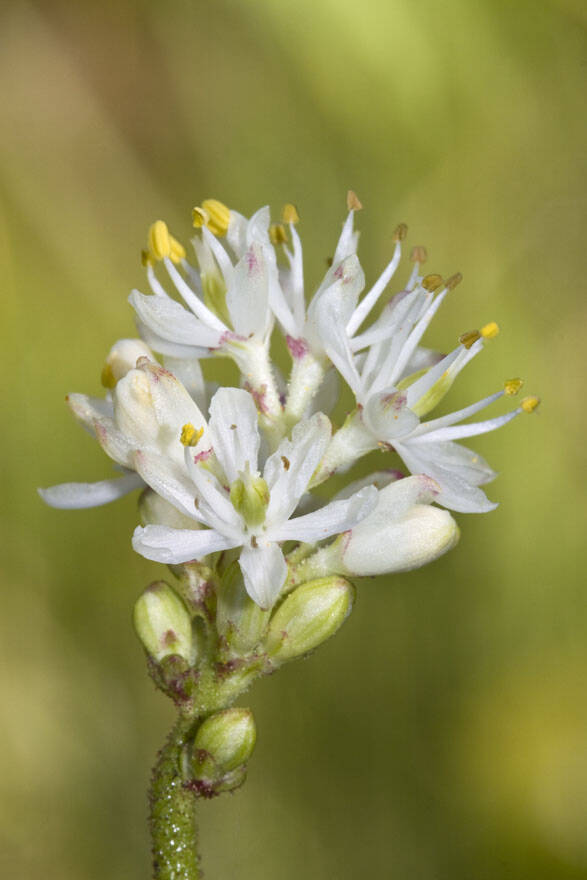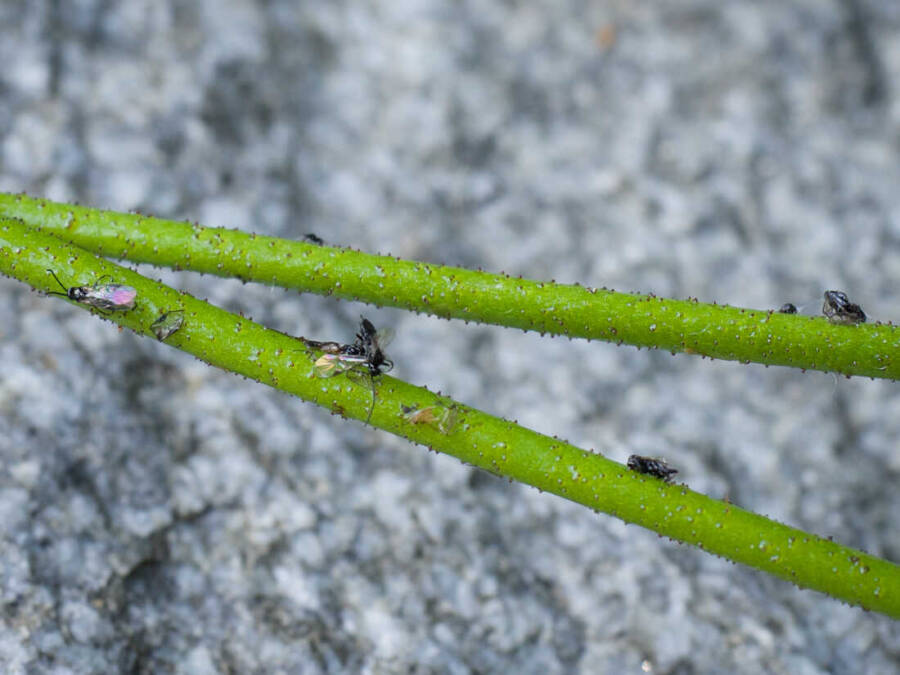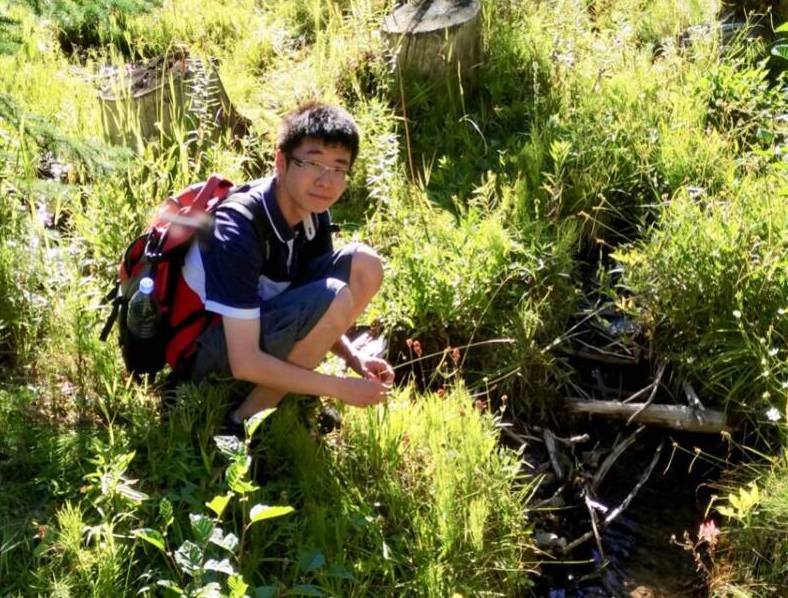A recent study found thatTriantha occidentalis, known as the western false asphodel, gets its nutrients by eating the innards of small insects.
Wikimedia CommonsThe western false asphodel lack a cistron that would aid it gain DOE from temperateness , which tipped scientists off that it may be a carnivore .
The westerly mistaken asphodel is a reasonably usual wildflower that can be found up and down the west glide of North America . It has lovely bloodless petals , an elegant stem , and adds a dash of delicacy to battlefield throughout the Pacific Northwest . And , now , scientists say that this secret carnivore get its nutrient by trapping and devouring insects .
suffer the scientific nameTriantha occidentalis , this common wildflower has long live ( and eat ) in unmingled visual modality . The industrial plant is a “ cryptic carnivore,”explained Qianshi Lin , a post doc at the University of Toronto and the lead author of a new study on the mysterious meat feeder .

Wikimedia CommonsThe western false asphodel lacks a gene that would help it gain energy from sunshine, which tipped scientists off that it may be a carnivore.
scientist first suspected thatT. occidentalisconsumed more than sun when they noticed it lacked a few genes that help industrial plant perform photosynthesis . To discover more , Lin enlisted a rum puppet — tent-fly , braid with an amino acid and nitrogen-15 , a unchanging isotope .
tramp through Vancouver ’s Boggy Cypress Provincial Park , he carefully leave several of the flies alongT. occidentalis’sticky stems . Then , he wait .
Beaty Biodiversity Museum / FacebookThe researcher left flies enlace with an isotope on the wild flower ’s stems .

Beaty Biodiversity Museum/FacebookThe researchers left flies laced with an isotope on the wildflower’s stems.
After a duo of weeks , Lin made two discoveries that suggest thatT. occidentaliswas carnivorous . One , he returned to find only the flies ’ exoskeleton on the bow . Two , a close study of the flora revealed that it had absorbed the isotope . In other words , T. occidentalishad exhaust the tent-fly .
“ Since Darwin ’s undercoat - break in monograph on carnivorous plants , scientists have recognized only 11 independent origins of plant carnivore , ” Lin and others announcedin a recent study on the industrial plant .
“ We report the discovery of a new bloodline of carnivorous plants , represented by the North American flowering plantTriantha occidentalis . ”

Beaty Biodiversity Museum/FacebookLead author Qianshi Lin in the field.
Lin and other scientist on his team are n’t 100 percent sure how the plant ate the fly sheet , however . “ We did n’t examine how they sop up the nutrient , ” Lin explained . “ I surmise they use the glandular tomentum … but it ’s just a conjecture . ”
He mark , however , that the plant allow for behind the flies ’ exoskeletons . That suggests to him thatT. occidentaliscan only condense the inner part of louse .
Beaty Biodiversity Museum / FacebookLead author Qianshi Lin in the field .
T. occidentalisdoes differ from other known carnivorous plants , however . Most of these have “ traps ” far away from their flowers . That ’s because they still ask their meal — i.e. insects — to pollinate them .
ButT. occidentalis’sticky bow go all the way up to its flower .
“ Putting your traps penny-pinching to your flowers is , on the surface , a really big conflict,”explained Sean Graham , another author on the study .
Graham and Lin suspect that the plant ’s sticky stem is sticky enough to trap modest hemipterous insect , like flies and beetle . But bigger insects like bees and butterflies can dodge the cakehole , allowing them to pollenate like normal and waver off to safety .
Lin tally thatT. occidentalisis also definitely not capable of killing anything big . “ Human existence definitely would n’t be trap , ” he say , putting to rest any visions of aLittle Shop of Horrors - like a massacre . “ We ’re huge and strong enough . ”
Most plants broadly do n’t become carnivorous , which score this Modern find an especially thrilling one .
“ From the plant ’s perspective , it ’s a lot of effort to lure an insect , capture it , endure it , [ and ] absorb those nutrient , while still probably photosynthesizing , ” explained Iza Redlinski , a conservation ecologist at the Field Museum in Chicago . Instead of absorbing energy from the sun , these plants must trap and devour prey .
Currently , there are around630 carnivorous plants known to military personnel — out of 390,900 plants identified by skill . But Lin and his team suspect that the act might be much , much higher .
As they noted in their study :
“ give the beingness of Triantha in close propinquity to major urban centers on the Pacific coast , our study serves as a vivid reminder that other cryptic carnivores may yet remain to be discovered . ”
In other words , the next innocent wild flower you see in a field of battle might not be so impeccant after all . It might be wait patiently for an unsuspecting fly or overhang to stumble into its yap — and become its next meal .
After reading about this new carnivorous industrial plant , learn about the so - calledpitcher plantthat can devour rodent . Or , discover the terrifyinggiant cow parsnip plantthat can cause Robert Burns and cecity .